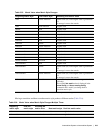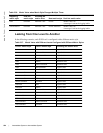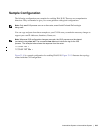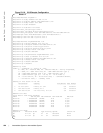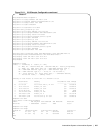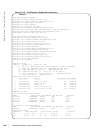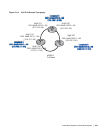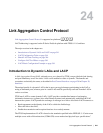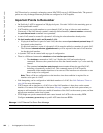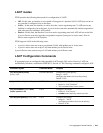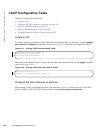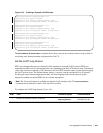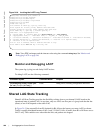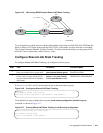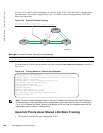Link Aggregation Control Protocol | 541
24
Link Aggregation Control Protocol
Link Aggregation Control Protocol is supported on platforms c e s
LACP addressing is supported on the E-Series ExaScale platform with FTOS 8.1.1.0 and later.
The major sections in the chapter are:
• Introduction to Dynamic LAGs and LACP on page 541
• LACP Configuration Tasks on page 544
• Shared LAG State Tracking on page 546
• Configure LACP as Hitless on page 549
• LACP Basic Configuration Example on page 549
Introduction to Dynamic LAGs and LACP
A Link Aggregation Group (LAG), referred to as a port channel by FTOS, can provide both load-sharing
and port redundancy across line cards. LAGs can be enabled as static or dynamic. The benefits and
constraints are basically the same, as described in Port Channel Interfaces on page 428 in Chapter 20,
Interfaces.
The unique benefit of a dynamic LAG is that its ports can toggle between participating in the LAG or
acting as dedicated ports, whereas ports in a static LAG must be specifically removed from the LAG in
order to act alone.
FTOS uses LACP to create dynamic LAGs. LACP provides a standardized means of exchanging
information between two systems (also called Partner Systems) and automatically establishes the LAG
between the systems. LACP permits the exchange of messages on a link to allow their LACP instances to:
• Reach agreement on the identity of the LAG to which the link belongs.
• Move the link to that LAG.
• Enable the transmission and reception functions in an orderly manner.
The FTOS implementation of LACP is based on the standards specified in the IEEE 802.3: “Carrier sense
multiple access with collision detection (CSMA/CD) access method and physical layer specifications.”



